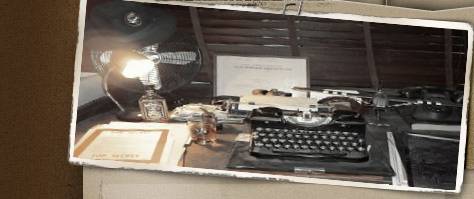
Item Description: Dutch
Resistance
Brassard
Introduction:
Battledetective
has inherited
another battle relic. From Tom's
grandfather this time. It is a
white cloth armband worn by the
Dutch Resistance Group known as
Partizanen Actie Nederland
(Partisan Action Netherlands).
The Story: The PAN
resistance group operated mainly
in the Eindhoven area and is
described in a special CIA
study, called: "The Dutch
Resistance and the OSS; Of
Market Garden and Melanie".
In part, it says:
"The Eindhoven and Nijmegen
Undergrounds.
Some organizations,
established locally by
individual Dutchmen, operated
with no formal, structured links
to any other groups. In
Eindhoven, a group known as the
"Partisan Action Nederlands"
(PAN) functioned along the lines
of the KP but did not consider
itself part of that
organization.
PAN was founded by Hoynck van
Papendrecht. He studied
engineering at the Technical
University in Delft until April
1943, when the Germans closed
the Dutch universities and began
forcibly relocating Dutch
students to Germany as a
manpower and professional talent
pool. Van Papendrecht went into
hiding and eventually moved to
Eindhoven, where he established
the PAN. By June 1944, the PAN
had reached its full strength of
80 to 100 young men and women.
The PAN had several small cells
operating in the small towns
around Eindhoven. These included
the Group Sander, named after
its leader, which worked as a KP
and LO subgroup.
Margarethe Kelder and her sister
were members of the Group
Sander. They smuggled downed
Allied airmen and Dutch
onkerduikers to a crossing site
on the Belgium border,
coordinating their activities
with a Belgian Resistance group.
The female members of the PAN
were primarily couriers, but
they were also valued
intelligence collectors. In
early September 1944, Kelder and
another female Resistance member
were asked to go into the woods
near Eindhoven to confirm the
presence of a German
antiaircraft battery. On the
pretext of gathering mushrooms,
they conducted their
reconnaissance and, when
confronted by German guards near
the battery, were able to
convince them of their
innocence.
Another PAN group in a town
north of Eindhoven conducted
sabotage operations. It put salt
in gas and oil tanks of German
vehicles and blew up railroad
tracks, using smuggled
explosives provided by mining
engineers
After D-Day, many in the Dutch
underground grew impatient and
wanted to conduct more
aggressive operations against
the Germans. The PAN did so by
launching raids against, among
other targets, the 20- to 30-man
German garrison at the Eindhoven
airport on 5 September 1944. It
also began conducting a form of
psychological warfare; PAN
members would approach German
soldiers they knew and try to
persuade them of the
hopelessness of Germany's
situation and to surrender. Some
PAN members were reported by
German soldiers and arrested.
The punishment for belonging to
a Resistance organization was
summary execution."
Details of how Tom's grandfather
obtained the brassard, are
unknown, but he served as a
Chief Inspector with the police
in Eindhoven before, during and
after the German occupation of
the city. After the war Chief
Inspector Matla was the head of
the Political Investigations
Department, a police unit which
located war criminals and
collaborators and brought them to
Justice. Perhaps in these
positions he had his contacts
with members of the resistance
group.
This is the brassard
(click
on the pictures to enlarge):
|













